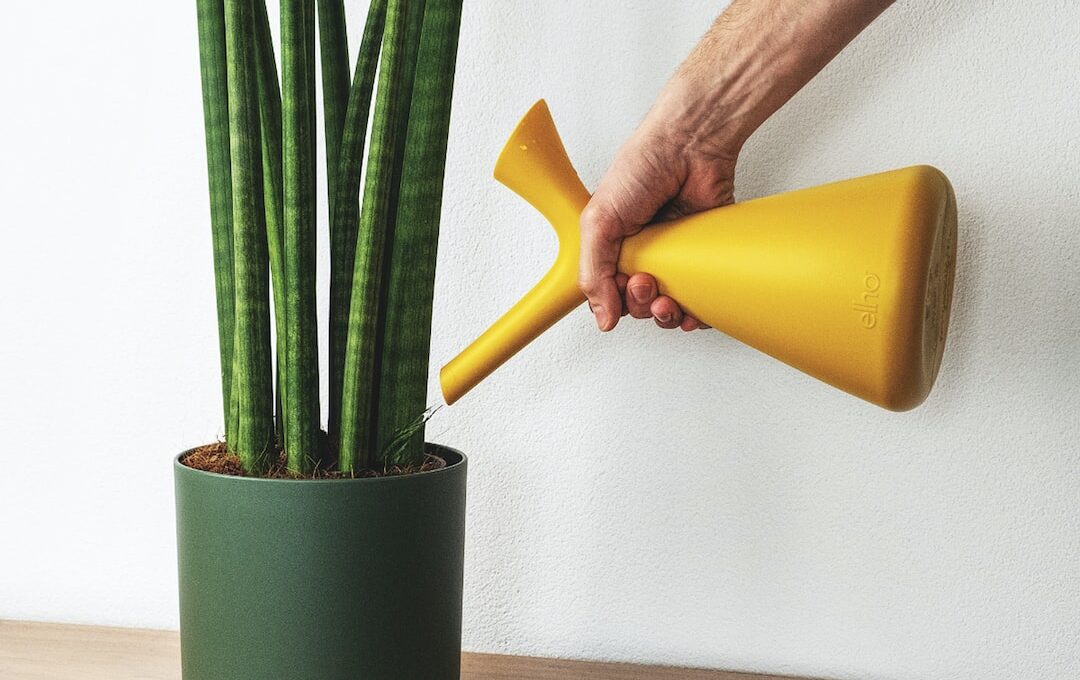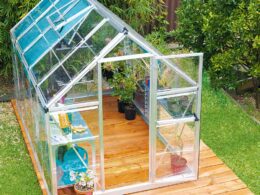Are you concerned about keeping your citronella plants healthy and vibrant? Knowing how often to water them is crucial for their well-being.
Citronella plants, with their natural mosquito-repellent properties, are a great addition to any outdoor space. To ensure that they thrive, it’s important to understand their watering needs. Overwatering can lead to root rot, while underwatering can cause the plant to wither and die.
By following a few simple guidelines, you can maintain the optimal moisture levels for your citronella plants. In this article, we will discuss how to determine the watering frequency, different watering techniques, and how to check the soil moisture. We will also provide helpful watering tips for different growth stages and for citronella plants in containers.
By mastering the art of watering, you can enjoy the benefits of beautiful and healthy citronella plants in your surroundings.
Quick Summary
- Deep watering once a week promotes healthy root development.
- Citronella plants prefer moist soil, but not waterlogged.
- Adjust watering frequency based on seasons and weather conditions.
- Checking soil moisture regularly is crucial in hot climates.
Understanding Citronella Plants
Citronella plants are truly fascinating, and understanding their needs is crucial for their growth and success. When it comes to citronella plant care, one important aspect to consider is watering. Proper watering is essential for the health of your citronella plants and ensuring the production of high-quality citronella oil, which is known for its numerous benefits.
To keep your citronella plants thriving, it’s important to water them appropriately. These plants prefer moist soil, but they don’t like to sit in water. Overwatering can lead to root rot and other issues. To avoid this, water your citronella plants deeply but infrequently. Aim for a thorough watering once a week, ensuring that the water reaches the root zone of the plant. This will promote healthy root development and overall plant growth.
In addition to watering, it’s important to provide your citronella plants with adequate sunlight and well-draining soil. These plants thrive in full sun, so make sure to choose a sunny location for them. As for the soil, a mixture of potting soil and sand will provide the necessary drainage.
By understanding the needs of your citronella plants, including proper watering techniques, you can ensure their growth and enjoy the benefits of citronella oil. Remember, a well-cared-for citronella plant is not only beautiful but also contributes to a safer and more enjoyable outdoor environment.
Determining Watering Needs
To keep your citronella plant thriving, it’s important to gauge its watering needs accurately. Proper watering is crucial for the health and safety of your plant. Here are some tips to help you determine the watering schedule and avoid overwatering:
-
Monitor the soil moisture: Check the soil regularly to ensure it isn’t too wet or too dry. Stick your finger about an inch into the soil, and if it feels dry, it’s time to water.
-
Water deeply but infrequently: Citronella plants prefer deep watering sessions rather than frequent shallow ones. This encourages the roots to grow deeper and makes the plant more resilient.
-
Use well-draining soil: Make sure the soil has good drainage to prevent water from pooling around the roots, which can lead to root rot.
-
Adjust watering during different seasons: Citronella plants have different watering needs in different seasons. During the summer months, when the plant is actively growing, you may need to water more often.
-
Watch for signs of overwatering: Excessive watering can drown the roots and cause yellowing leaves, root rot, or a foul smell. If you notice these signs, reduce watering and improve drainage.
By following these guidelines and adapting your watering routine to the specific needs of your citronella plant, you can ensure its safety and promote its overall well-being.
Watering Frequency
Make sure your watering routine aligns with the specific needs of your plant, as it can significantly impact its overall health and growth. When it comes to watering citronella, it’s important to understand the benefits of deep watering. Deep watering allows the water to reach the roots, promoting strong and healthy growth. This method helps the plant develop a deep root system, making it more resilient to drought conditions.
The frequency of watering citronella depends on various factors, including the weather. During hot and dry weather, citronella plants require more frequent watering to prevent them from drying out. On the other hand, during cooler and wetter weather, you may need to water less often as the soil retains moisture for longer periods.
To determine when to water, you can check the moisture level of the soil by inserting your finger about an inch deep. If the soil feels dry at that depth, it’s time to water. It’s important to avoid overwatering, as this can lead to root rot and other issues. Always ensure that the soil is well-drained to prevent waterlogging.
By understanding the benefits of deep watering and considering the impact of weather on watering needs, you can ensure that your citronella plant receives the proper amount of water to thrive. Remember to adjust your watering frequency accordingly and monitor the moisture level of the soil regularly.
Watering Techniques
Ensure your watering techniques align with the specific needs of your plant, as they can greatly impact its overall health and growth. When it comes to citronella plants, proper drainage is essential. These plants prefer soil that is well-draining to prevent waterlogging, which can lead to root rot and other issues.
To ensure proper drainage, consider using a pot with drainage holes or adding a layer of gravel or pebbles at the bottom of the pot before adding soil.
In hot climates, watering citronella plants can be a bit trickier. The heat can cause the soil to dry out more quickly, so it’s important to monitor the moisture levels regularly. Water your citronella plant deeply, allowing the water to reach the roots. However, be careful not to overwater, as this can also harm the plant. A good rule of thumb is to stick your finger into the soil up to your first knuckle – if it feels dry at that depth, it’s time to water.
Remember, the goal is to keep the soil consistently moist, but not waterlogged. By following these watering techniques and providing proper drainage, you can ensure your citronella plant thrives and continues to repel those pesky mosquitoes.
Checking Soil Moisture
Monitoring the moisture levels of your citronella plant’s soil regularly is crucial in hot climates to prevent it from drying out too quickly. By checking the soil moisture, you can ensure that your citronella plant stays hydrated and healthy.
Here are four important steps to follow when monitoring the hydration of your citronella:
-
Stick your finger about an inch into the soil to check for moisture. If it feels dry, it’s time to water your citronella. However, if it feels damp, hold off on watering for a few more days.
-
Look out for signs of overwatering, such as yellowing leaves, root rot, or a foul smell coming from the soil. These signs indicate that you may be watering your citronella too much, which can lead to root damage.
-
Consider using a moisture meter to accurately measure the moisture levels in the soil. This tool can help you determine when it’s time to water or if the soil is still moist enough.
-
Adjust your watering schedule based on the weather conditions. During hot and dry periods, your citronella may require more frequent watering, while cooler and more humid conditions may require less water.
By regularly monitoring the hydration of your citronella plant and following these steps, you can ensure that it receives the proper amount of water to thrive and stay healthy.
Is the Watering Schedule the Same for Strawberries and Citronella?
The watering frequency for strawberries should not be the same as for citronella. Strawberries prefer consistently moist soil, while citronella requires a more well-drained environment. Adjusting the watering schedule accordingly will help both plants thrive. It’s important to understand the unique needs of each plant to maintain their health and productivity.
Watering Tips for Different Growth Stages
During the different growth stages of your citronella plant, it’s important to pay attention to its watering needs in order to nurture its development and help it flourish. Proper watering is crucial for the health of your citronella plant, but it’s equally important to avoid overwatering risks.
Overwatering can lead to root rot, which can severely damage your plant and hinder its growth. To prevent this, make sure you water your citronella plant when the top inch of soil feels dry to the touch. This will ensure that your plant receives enough moisture without drowning its roots.
On the other hand, underwatering can also be detrimental to your citronella plant. Signs of underwatering include wilting leaves, dry soil, and a droopy appearance. To combat this, water your citronella plant thoroughly until you see water draining out of the bottom of the pot. This will ensure that the roots are adequately hydrated.
Remember, it’s better to slightly underwater than to overwater your citronella plant. This will help prevent the risk of root rot and promote healthy growth. By paying attention to your plant’s watering needs and providing it with the right amount of moisture during each growth stage, you can ensure that your citronella plant thrives and keeps your outdoor space safe from pesky mosquitoes.
Watering Citronella in Containers
Watering your potted citronella plant is like quenching its thirst with a refreshing drink on a hot summer day. Just like any other plant, citronella needs water to survive and thrive. When it comes to watering citronella indoors, it’s important to strike a balance.
Overwatering can lead to root rot, while underwatering can cause the plant to wither and die. To ensure the optimal growth of your citronella plant, water it thoroughly once the top inch of soil feels dry to the touch. Make sure the pot has good drainage to prevent water from pooling at the bottom. Remember, it’s better to underwater than overwater. If you’re unsure whether your plant needs water, it’s always safer to wait a bit longer.
When it comes to watering citronella in the garden, the same principles apply. Check the soil moisture regularly and water deeply when necessary. Aim to keep the soil consistently moist but not waterlogged. Citronella plants are fairly drought-tolerant, so they can withstand a bit of dryness. However, during hot summer months, you may need to water more frequently to keep them hydrated.
By following these watering tips, you can ensure that your citronella plant stays healthy and happy, providing you with its delightful fragrance and mosquito-repelling properties.
Troubleshooting Watering Issues
If your citronella plant is struggling, try adjusting the amount of water it receives to troubleshoot any potential issues. Proper watering is crucial for the health of your citronella plant, so it’s important to avoid common watering mistakes.
Overwatering can lead to root rot and other fungal diseases, while underwatering can cause the plant to dry out and wither. To ensure you’re watering your citronella correctly, watch out for signs of overwatering or underwatering.
Signs of overwatering include wilting leaves, yellowing foliage, and a damp or musty smell coming from the soil. If you notice any of these signs, reduce the frequency of watering and allow the soil to dry out between waterings.
On the other hand, signs of underwatering include drooping leaves, dry and brittle foliage, and soil that is visibly dry. If you see these signs, increase the frequency of watering and make sure the soil is evenly moist.
Remember, it’s important to strike a balance when watering your citronella plant. Aim to keep the soil consistently moist but not waterlogged. By paying attention to the signs of overwatering or underwatering, you can ensure that your citronella plant thrives and keeps those pesky mosquitoes away.
Frequently Asked Questions
Can citronella plants survive in drought conditions?
Citronella plants can survive in drought conditions but require regular watering for optimal growth. To ensure their survival, implement proper survival techniques such as providing adequate water and monitoring soil moisture levels as part of citronella plant care.
What are some signs that my citronella plant is getting too much water?
To prevent overwatering your citronella plant, watch out for signs like yellowing leaves, root rot, and a musty smell. Make sure to provide proper drainage and only water when the top inch of soil is dry.
Can I use a sprinkler system to water my citronella plants?
Yes, you can use a sprinkler system to water your citronella plants. However, be aware that sprinklers may not be the most efficient method. Consider alternatives like drip irrigation or hand watering to ensure your plants get the right amount of water without overwatering.
Is it better to water citronella plants in the morning or in the evening?
For safety, it is better to water citronella plants in the morning. Morning watering helps prevent fungal diseases by allowing the leaves to dry quickly. Evening watering can create a damp environment that promotes disease growth.
Can I use tap water to water my citronella plants, or should I use filtered water?
You can use tap water to water your citronella plants, but using filtered water is safer. The pH of water can affect citronella plant growth, so it’s better to use water with a neutral pH.
Conclusion
So, now you know how often you should water citronella plants.
Remember, it’s important to understand the needs of the plant and check the soil moisture regularly.
Whether you’re growing citronella in the ground or in containers, watering techniques and frequency may vary.
By following these tips, you can ensure that your citronella plants stay healthy and thrive.
Happy gardening!









